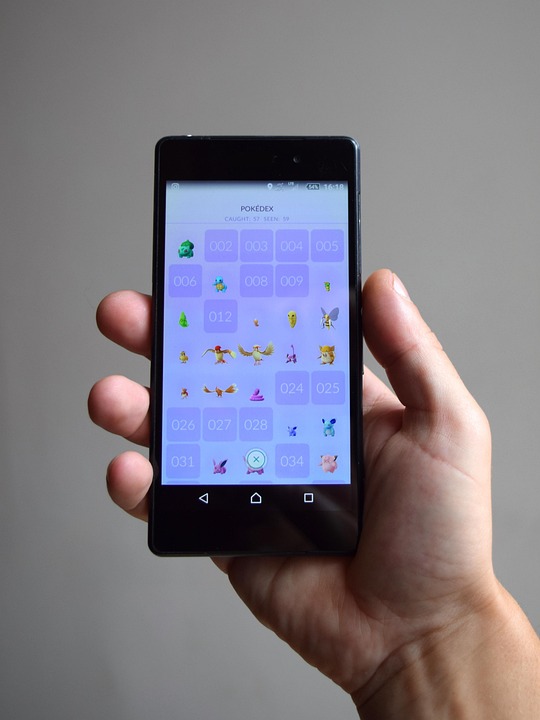User Experience in Augmented Reality Games: Best Practices and Innovation
Augmented reality (AR) is transforming the gaming landscape, providing users with extraordinary experiences that blend the real world with digital elements. As the market for augmented reality games continues to grow—projected to reach $198 billion by 2025—understanding user experience (UX) has never been more crucial for developers and designers looking to capture and retain players. This article explores best practices in UX for augmented reality games, highlighting key innovations shaping the industry.
The Importance of User Experience in Augmented Reality Games
User experience in augmented reality games determines how players interact with their environment and the digital content seamlessly overlaid onto it. A good UX can elevate an otherwise basic game to an unforgettable experience. In contrast, a poorly designed user experience can hinder gameplay and dissuade users from returning.
Key Statistics Impacting AR Game UX
- User Engagement: According to a recent survey, 75% of players reported that they would continue to engage with a game that offers an immersive augmented reality experience.
- Return on Investment: The AR gaming market is expected to grow by 43% CAGR between 2022 and 2030, emphasizing the financial importance of effective UX design.
Best Practices for Enhancing User Experience in AR Games
1. Create Intuitive Interfaces
An intuitive interface is essential to reducing frustration and enhancing user satisfaction. AR applications often require users to interact with their real environment in a new way, so ensuring that the controls and navigation are straightforward is paramount. This involves:
- Streamlined Menus: Design menus that minimize the number of clicks required. Use common symbols and language for broader understanding.
- Contextual Help: Provide prompts that guide users through game mechanics without overwhelming them with information.
2. Prioritize User Safety
One of the most significant concerns in augmented reality games is user safety. As users engage with the virtual world overlaid on their physical surroundings, it is essential to implement safety measures:
- Real-World Alerts: Integrate notifications for users when they approach physical obstacles.
- Friendly Boundaries: Encourage users to play within set physical boundaries using visual markers.
3. Leverage Sensory Engagement
Engaging more senses can create a richer AR experience. Using audio cues or haptic feedback can provide invaluable information about the game or environment, enhancing immersion. For example, incorporating surrounding sounds that align with game actions (like footsteps or ambient noise) can help players feel more connected to their virtual journey.
4. Encourage Social Interaction
Many players enjoy sharing their experiences, especially in a game setting. Features that foster social interaction can enhance user engagement. Consider adding:
- Multiplayer Features: Support for cooperative gameplay lets users engage with friends.
- Shareable Content: Allow users to record and share their gameplay experiences on social media platforms.
5. Regular Updates and Community Feedback
Staying current with trends and user preferences is vital for retaining players. Regularly update your game based on user feedback gathered through surveys or online forums to ensure that it meets evolving expectations. Engaging with the community through polls or contests can also foster loyalty and user investment.
Case Study: Pokémon GO’s User Experience Success
A prime example of effective UX in an augmented reality game is Pokémon GO. This game ingeniously combines outdoor exploration with digital engagement, making it socially interactive and physically engaging. Pokémon GO’s regular updates and community events keep the game fresh, drawing players back consistently. Furthermore, the game implemented intuitive map navigation and safety alerts, creating an engaging and safe user experience.
The Future of UX in Augmented Reality Games
As technology advances, UX in augmented reality games will continue to evolve. Following trends in artificial intelligence (AI) and machine learning, developers can create tailored experiences that adapt to individual player behavior, further enhancing user satisfaction. Innovations such as eye-tracking technology could also allow for deeper levels of interaction and immersion.
Conclusion
In conclusion, the success of augmented reality games hinges on a well-crafted user experience that emphasizes intuitive design, safety, social interaction, and community feedback. As developers and designers adapt to emerging technology and user needs, they can create captivating experiences that resonate with players, elevating AR games from the ordinary to the extraordinary. For more insights on user experience and technology trends, explore these articles on buzzo.live: Understanding User Engagement in Gaming and The Evolution of Game Technology.
For external information, visit the Augmented Reality Market Report for further insights and statistics regarding industry trends. By continuously refining user experience best practices, augmented reality games can ensure that they remain at the forefront of the gaming world.
Suggested Images:
- Image 1: A player using augmented reality to capture virtual creatures in a real-world setting. (Alt text: User engaging with augmented reality games)
- Image 2: A well-designed AR game interface focusing on safety and user interaction. (Alt text: Intuitive interface design in augmented reality games)
By adhering to these principles, developers in the augmented reality games sector can ensure their products thrive in a competitive market while providing players with exceptional experiences.


